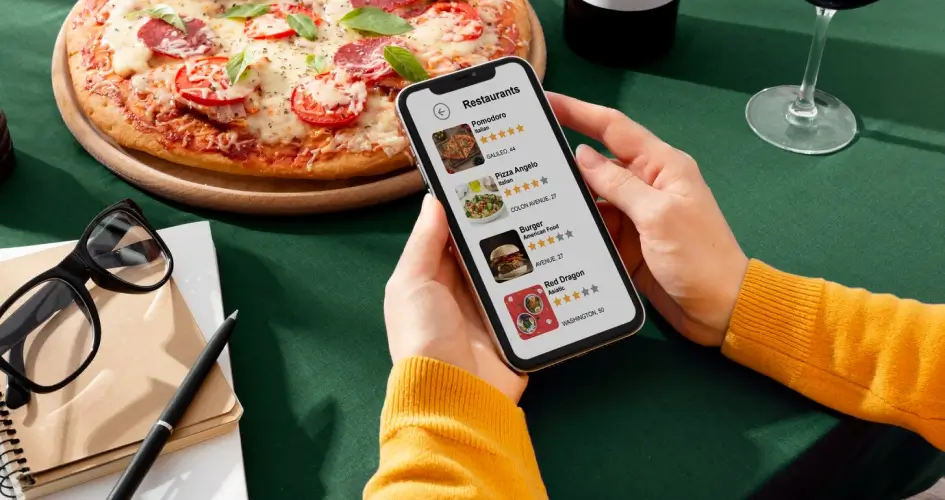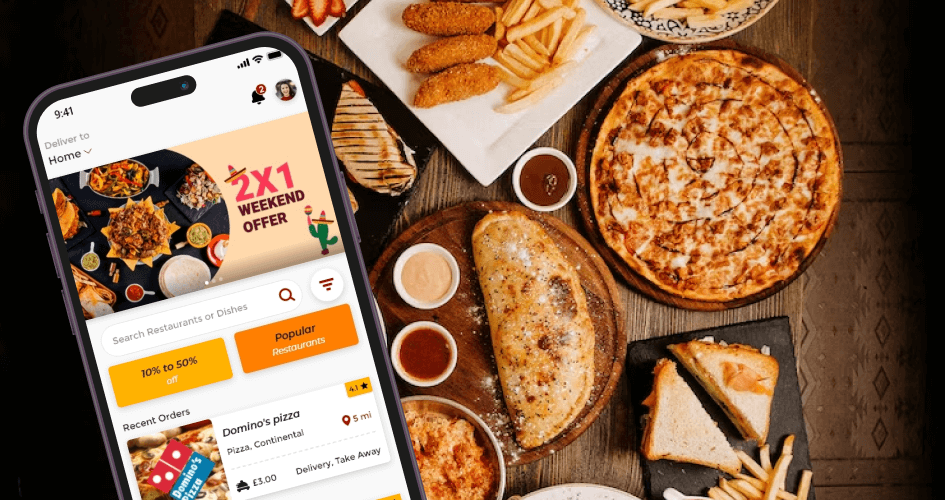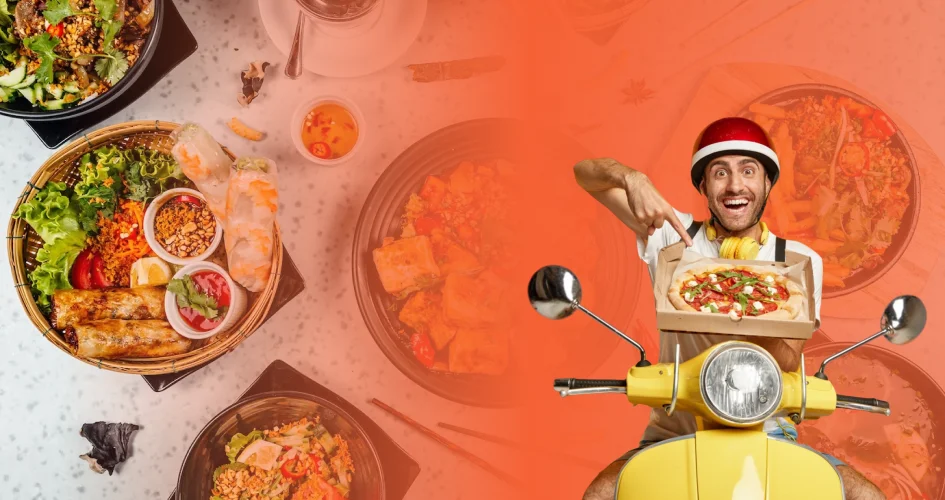Creating a secure app is one of the most important steps when starting a food delivery business.
After all, this business model requires collecting customer information, such as their name, phone number, and address.
So, keeping their personal data secure goes a long way in establishing customer trust and brand loyalty.
In contrast, failing to do so can lead to legal issues, reputational damage, and even monetary loss.
If you’re not sure where and how to start, this comprehensive guide will discuss several app security measures you need to implement during food delivery app development.
8 Security Best Practices for Your Food Delivery App
From data encryption to multi-factor authentication, this section will go through every proven method for ensuring the security of your food delivery app.
1. Data Encryption
The first step is to make sure that personal details and payment information transmitted between users, restaurants, and the delivery platform are protected using industry-standard encryption protocols.
With end-to-end encryption, this sensitive data is converted into unreadable code during transmission, making it nearly impossible for unauthorized entities to decipher.
Moreover, data encryption helps food delivery businesses adhere to regulatory frameworks such as GDPR, HIPAA, or PCI DSS, ensuring legal compliance and avoiding hefty penalties.
Perform these encryption best practices to secure your food delivery app:
- Select trusted encryption algorithms – Choose strong encryption algorithms that are widely recognized for their security. AES (Advanced Encryption Standard) is a common choice for symmetric encryption, while RSA (Rivest-Shamir-Adleman) is popular for asymmetric encryption.
- Implement SSL/TLS – Use Secure Sockets Layer (SSL) or its successor, Transport Layer Security (TLS), to encrypt data during transit. This safeguards information as it travels from the app to the server, and vice versa.
- Secure Storage – Encrypting data at rest is also crucial. If an unauthorized person gains access to the server or device storage, encrypted data remains unreadable without the proper decryption key.
2. Secure Login
To prevent unauthorized access, encourage users to create strong passwords that contain a combination of uppercase and lowercase letters, numbers, and random phrases.
Also, remind them to change their password regularly.
More importantly, implement multi-factor authentication to add an extra layer of security.
This method requires users to provide multiple forms of identification, such as passwords and one-time codes sent to their registered mobile devices.
If you want to minimize risks while still providing a convenient login experience, use biometric authentication methods like fingerprint scanning or facial recognition.
Here are other authentication and security methods to try:
- Bot protection mechanisms. Integrate captcha during the login process to prevent automated attacks by malicious bots.
- User account lookout. Temporarily lock user accounts after a certain number of unsuccessful login attempts to eliminate brute-force attacks.
- Token-based authentication. Instead of relying on static passwords, users will receive a unique token after successful login. It offers a much more secure authentication method, as only the server that created the token can verify it.
3. Payment Gateway Security
Users have their own preferences when it comes to payment – some of them prefer a direct bank transfer, while others may find digital wallets more convenient.
For that reason, it’s crucial to have a wide range of payment processing platforms at your disposal.
But, checking their security is just as important.
When selecting credit card providers, make sure they comply with the Payment Card Industry Data Security Standard (PCI DSS).
Also, integrate only reputable and widely-used payment processors, such as PayPal, Apple Pay, and Stripe.
To make your transactions even more secure, consider replacing credit card numbers with tokens.
Even if your food delivery app is breached, these tokens will be meaningless without their decryption keys.
4. Secure APIs
APIs (Application Programming Interfaces) transmit sensitive data between the app, servers, and external services.
Secure APIs prevent malicious parties from accessing or manipulating the exchanged data.
This is especially critical in a food delivery app, where personal and financial information is heavily involved.
To maximize your API security, conduct the following best practices:
- Rate limiting: Control the number of requests an API can receive within a specific timeframe. This prevents misuse, such as denial-of-service attacks or data theft.
- Input validation: To eliminate the risk of malicious code injection, validate each data received through API requests.
- Monitoring and logging. Regularly review logs to detect suspicious patterns or potential security incidents, so you can quickly perform the needed action.
- API versioning: With this method, you can manage and track changes to the API without disrupting clients.
- Secure DevOps practices: Integrate security best practices into the development lifecycle, including regular security assessments, code reviews, and continuous monitoring to identify and address vulnerabilities.
- API documentation: Clear documentation allows developers to use the API correctly, reducing the likelihood of security issues.
5. User Privacy Controls
Having robust user privacy controls not only ensures compliance with data protection regulations, but also fosters user trust and loyalty.
Furthermore, privacy controls allow users to tailor their in-app experience.
For instance, they may choose to share location data for precise delivery tracking while keeping other details private.
As a result, your food delivery app should offer privacy settings to give users full control over their data.
Inform users about the type of data being collected and its purpose, and ask for their consent before processing such information.
When modifying your terms of service and privacy settings, let users know about the changes through in-app notifications.
This way, you can maintain maximum transparency and prevent any backlash against your platform.
6. Session Management
Session management prevents unwanted access to user accounts.
It ensures that once a user logs out or their session ends, they cannot be maliciously logged back in.
This prevents hackers from gaining access to an active session and compromising sensitive information.
Not sure how this method works?
We’ve got a few security measures you can consider:
- Token-based session management: Generate unique tokens for each user session, so attackers will have a hard time hijacking sessions.
- Automated logouts: After a specified period of inactivity, your system should automatically log users out. This reduces the risk of someone gaining access to an unattended, active session.
- Regenerated session IDs: Another way to keep hackers at bay is creating new session IDs after each significant event, including logins and user access changes.
- Secure cookie attributes: Make sure your session cookies have secure attributes, usually marked as “Secure” and “HttpOnly.” The first attribute ensures the cookie is sent over HTTPS connections, while the second one prevents client-side scripts from accessing the cookie.
- User authentication checks: Ask users to verify their identity when accessing sensitive information or performing actions that require advanced access.
7. Geolocation Privacy
Revealing information about a user’s home or workplace is a sensitive matter.
This is because uncontrolled access to geolocation data poses a risk of misuse, such as stalking or harassment.
Beyond adhering to applicable data privacy laws, protecting location privacy is also beneficial from a business perspective.
Users are more likely to trust and continue using a food delivery app that prioritizes their privacy.
Here’s how you can protect geolocation privacy while still delivering a smooth user experience:
- Ask for user consent. Before accessing users’ location, your app should ask for their permission. Clearly communicate the benefits of sharing this information, such as faster and more accurate deliveries.
- Implement data masking. Remove personally identifiable information whenever possible. This makes it more challenging for hackers to trace specific locations back to individual users.
- Allow location sharing control. Give users full flexibility to customize the data sharing settings. For example, users may want to share their location for delivery purposes but not for other app features.
8. Regular Security Audits
Maintaining your food delivery app’s security is an on-going process that goes beyond the initial development phase.
Threats are always evolving, and regular audits help your food delivery app adapt to new security challenges.
Here’s a step-by-step checklist to streamline your security auditing process:
- Establish a routine schedule for vulnerability assessments, penetration testing, and code reviews.
- Simulate security incidents to test the effectiveness of the app’s mechanisms.
- Invite external security experts for independent validation – they can uncover blind spots that might be overlooked during internal assessments.
- Check whether the app aligns with the latest data protection and privacy regulations, as they may change.
- Use monitoring tools that provide real-time insights into the app’s security status.
Alternatively, hire an application maintenance and support consultant like Intelivita.
Beyond mitigating security threats, we will also enhance your app’s functionality to keep it running smoothly.
How to Create an Incident Recovery Plan?
Even after implementing all security measures in this article, unwanted incidents can still occur.
That’s why you need a well-defined incident recovery plan to minimize the damage.
Here’s how to create one:
- Clearly outline the objectives of the incident recovery plan. Define the scope and types of incidents it will cover, such as data breaches, system outages, or cyberattacks.
- Assemble a dedicated team with well-defined roles and responsibilities. Include individuals from IT, security, legal, communication, and relevant departments.
- Evaluate potential risks and vulnerabilities that could lead to incidents. Assess the impact of each incident type on business operations, reputation, and compliance.
- Create detailed procedures for each type of incident, including the necessary steps during incident detection, analysis, containment, and recovery.
- To save time, use automated tools and systems for real-time incident monitoring.
Once the plan is finished, gather feedback for continuous improvement.
Analyze each incident and the effectiveness of the response, then use these insights to make the incident recovery plan even better.
Takeaways
To build a thriving food delivery business, having a secure app is non-negotiable.
By protecting users from data breach, leaked personal information, and unauthorized access to their bank account, you can maintain customer trust and improve brand loyalty.
In this article, you’ve learned all the necessary measures to keep your food delivery app safe, including data encryption, multi-factor authentication, user privacy controls, and session management.
If you don’t possess the technical know-how to perform these security best practices, our experts here at Intelivita can provide the needed assistance.
Contact us today, and we’ll help you create a secure, fast-performing, and reliable food delivery app users can’t resist.




